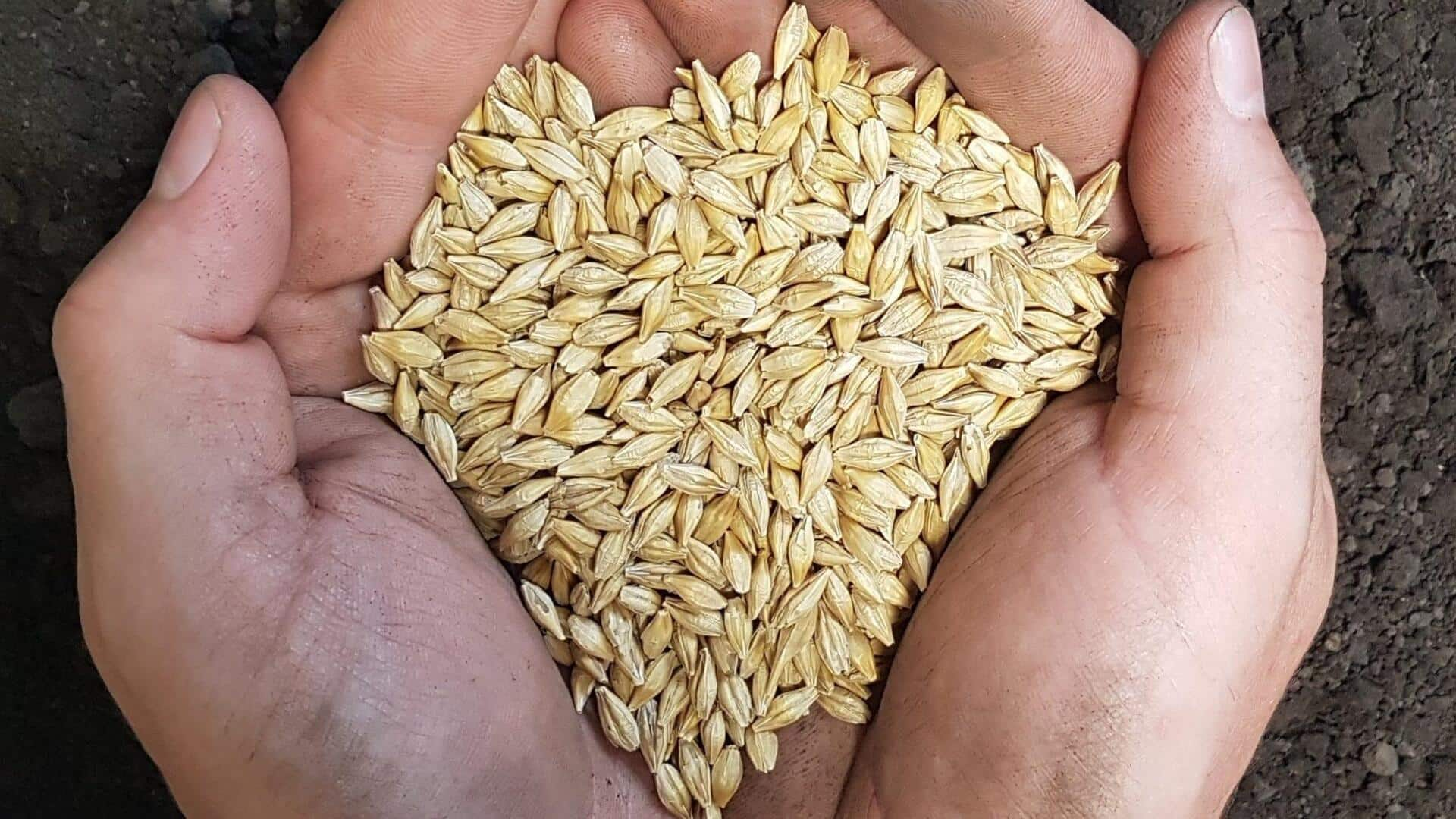
Barley v/s Rye: Which one is better for you?
What's the story
Barley and rye are two whole grains that have been a part of the human diet for centuries. Both grains provide a host of health benefits and are rich in nutrients. Knowing the nutritional profiles of barley and rye can help you make informed dietary choices. Here's a look at the key differences and similarities between barley and rye, from fiber content to vitamin levels.
#1
Fiber content comparison
Barley is famous for its high fiber content, especially beta-glucans, which are known to help reduce cholesterol levels. A serving of cooked barley provides around six grams of fiber. Rye also packs a punch with fiber but has a slightly lower amount than barley, with around five grams per serving. Both grains help with digestion and can help you maintain a healthy weight by making you feel full.
#2
Vitamin levels in each grain
Both barley and rye are loaded with essential vitamins, such as B vitamins, which are important for energy production and brain function. Barley has more niacin than rye, while rye is richer in thiamine. The vitamins in these grains contribute to overall health by supporting metabolic processes and keeping skin healthy.
#3
Mineral content analysis
When it comes to minerals, both barley and rye provide good amounts of magnesium, phosphorus, and potassium. Barley has more magnesium than rye, which is important for bone health and muscle function. On the other hand, rye has more phosphorus, which is important for the formation of bones and teeth. Including either grain in your diet can help meet daily mineral requirements.
Tip 1
Glycemic index considerations
The glycemic index (GI) is an important factor to consider when choosing foods that affect blood sugar levels. Barley has a lower GI than many other grains, which makes it an excellent choice for those looking to manage their blood sugar levels. Rye also has a low GI, but may vary depending on how it's processed or prepared.